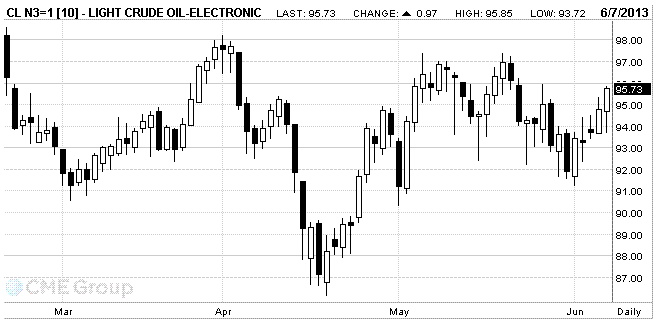- Oil: an overview of the market situation
Market news
Oil: an overview of the market situation
Oil prices rose, with rising above $ 104 a barrel, after U.S. jobs data confirmed that the U.S. economy continues to gain momentum.
It is learned that the U.S. employers added 175,000 jobs in May, but the unemployment rate rose to 7.6% from 7.5% in April.
Economists had forecast that payrolls will rise by 163,000 and the unemployment rate will be the same.
These come at a time when the economic recovery showed some signs of slowing down. The Federal Reserve believes that the ability to create jobs is strong enough to start reducing their purchases of bonds.
Fed's massive bond purchases have been a boon for the financial markets, so investors with sadness the statement by Fed chairman Ben Bernanke last month that the central bank may decide to start slowing down the pace of bond purchases at one of his "closest meetings," if the economy continues to improve. As a result, recent data have been carefully studied for signs that the government's spending cuts and tax increases could undermine the recovery, especially after the new series of federal spending cuts known as sequestration, which entered into force on 1 March. Gauges of manufacturing activity continued to show strengthening.
We also add that the news of the fall in U.S. crude inventories also supported prices. The data showed that oil stocks at Cushing, Oklahoma, fell by more than 1 million barrels per day from May 31 to June 4.
The cost of the July futures on U.S. light crude oil WTI (Light Sweet Crude Oil) rose to 95.73 dollars a barrel on the New York Mercantile Exchange.
July futures price for North Sea Brent crude oil mixture rose $ 0.95 to $ 104.47 a barrel on the London exchange ICE Futures Europe.
